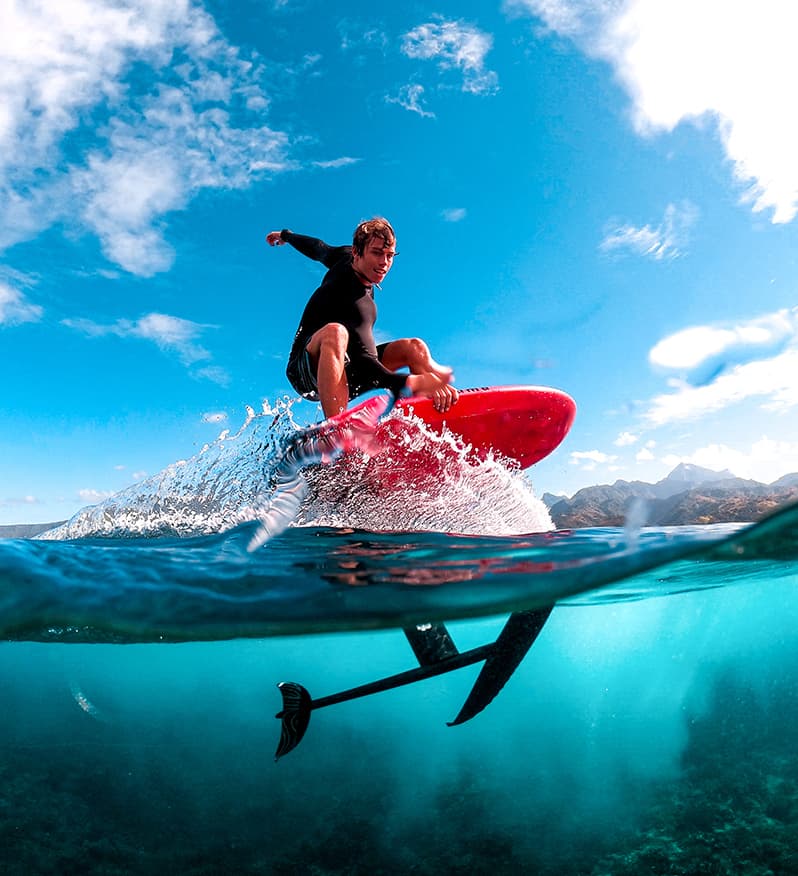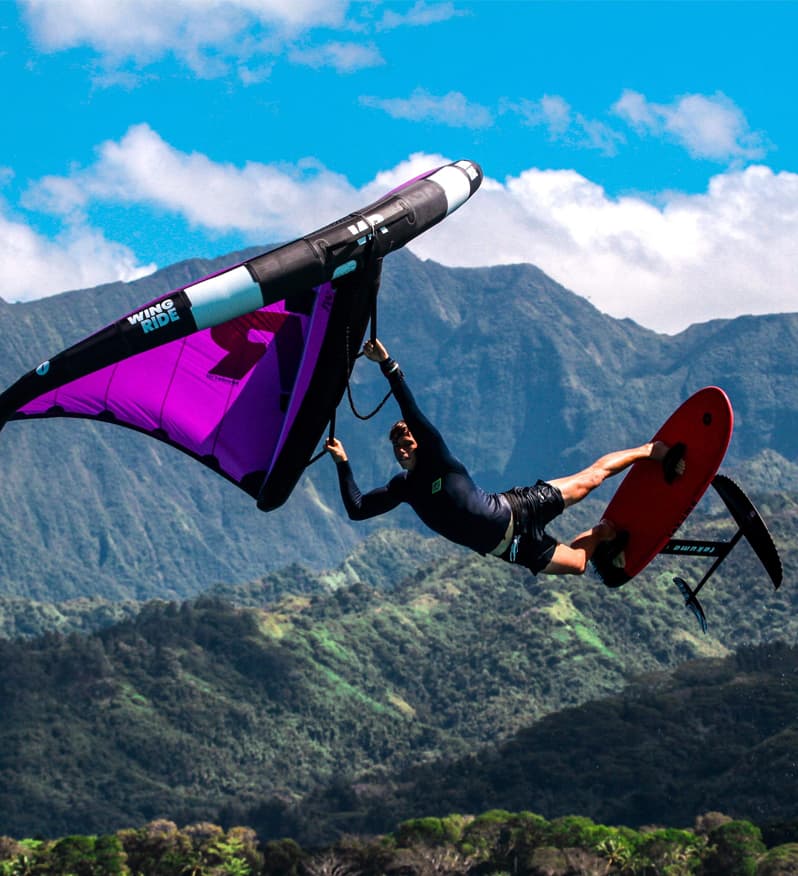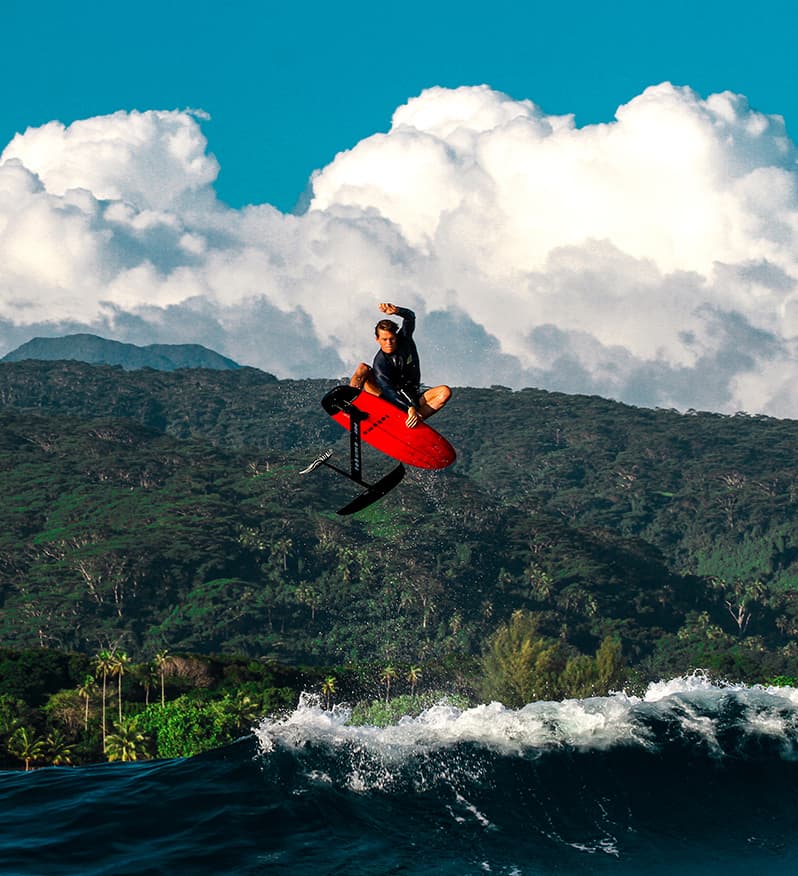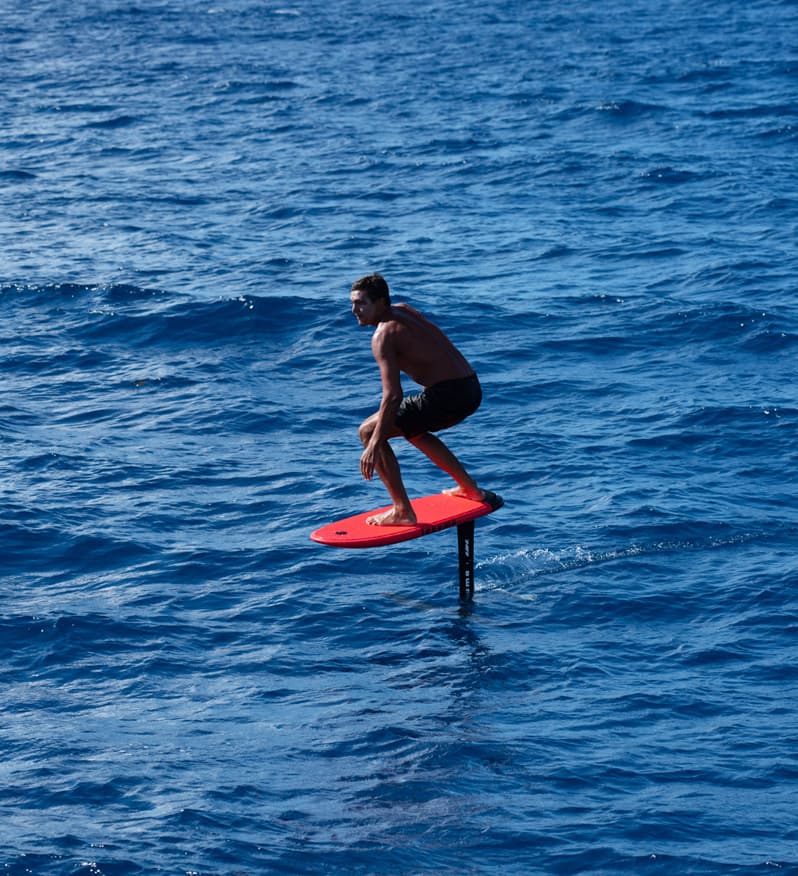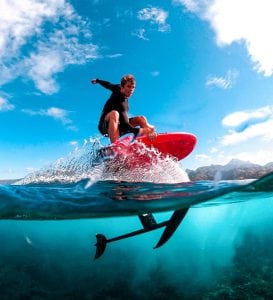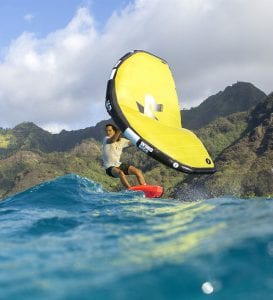Inspired by humpback whales
We had the chance to conduct an interview with Foiling Magazine talking about our brand-new product range, a game changer in the foiling industry.
Dive deep into the Kujira foil with our founder’s own words!
1. So let’s start with the thinking behind the name, Kujira foil. We did a quick Google search of ‘Kujira’ and got pictures of pretty impressive whales…
Yes exactly, Kujira is Japanese for whale. Takuma has some japanese ties, not only with its name, but part of our R&D team operates in Japan where a minority of people still hunt whales as a tradition. We have always been against cruel behaviours and in the process of developing the Kujira foil, we made the decision to commit more to the environment’s protection.
There is an element of biomimicry in the Kujira’s innovation and engineering process, as it is fully inspired by humpback whales. After two years of analysis, research and tests, we are finally ready and excited to release our foil evolution: the Kujira line.
2. From what we’ve read, it sounds like quite a process that Laurent Borgna (who worked on the Takuma LOL Profoil range) and Cyril Coste (Takuma founder) have gone through to come up with the Kujira foil. Were there actual whales involved ?!
First of all, it’s been a long process of researching, analysing the phenomenon and finding the best way to adapt it to hydrofoils with our knowledge of their design. The Kujira foil is inspired by the pectoral fin of humpback whales, known for their agility, power and efficiency. After a number of prototypes, modifications and adjustments of the shape and profile of the bumps, computer simulations, and hours of testing in all conditions, we could clearly feel big improvements on the glide, lift and comfort in our foils.
3. So what design elements were conceived from these observations of nature, how were they implemented, and what benefits do they provide?
The efficiency of humpback whales is caused, amongst other things, by their pectoral fins. The mechanics of it is basically to create lift by generating swirls. This also creates velocity while maintaining control, which is specific to this type of whale. This is what we wanted to implement in our designs, and we did just that by reproducing and adding on whale-like bumps to the hydrofoils. We adjusted their shape and number to best fit our design. This gives an extra lift that allows using a smaller foil for similar support, and creates a smooth fly and glide even at low speed. The foil’s smoothness and comfort increases even more at higher speeds.
You can immediately feel the benefits of the Kujira foil, and it’s super interesting to see non professional foilers get better using them.
4. And what sizes are they available in, and what disciplines are you recommending for each size?
The first release of the Kujira foil is 980cm2. It’s become one of our most well rounded foils in surf and wing foiling, but it’s also used for lighter and more advanced foil in downwind. Other sizes are in the works, bear in mind that we always make sure to take the time needed to have perfect shapes and most efficient foils for every discipline and condition.
5.Tell us about those signature LOL upturned winglets on the front wing. How do they impact the ride?
It is really the same concept as in aeronautics: it feels more comfortable and reassuring to navigate, and it saves on kerosene. Using winglets on a hydrofoil will make the glide and lift more efficient and comfortable.
6. Where has the R&D primarily been taking place, and where have been your main testing locations?
We have different testing bases depending on products and conditions. It is super important to test in all kinds of conditions to get most efficient insights and create ideal products.
Laurent Borgna and Clement Colmas (team rider) are based in New Caledonia. They have all the conditions needed to spend hours testing every single day, from windy lagoons to extreme reef breaks. Another part of the R&D team is based in Japan and Taiwan. We also get a lot of feedback from our international team riders and improve everyday based on them.
7. Is the Kujira foil range going to influence your Efoil design in the future?
It’s a bit early to talk about it… but the Efoil is not only so fun, but also an incredible way of testing products. It’s really accurate and we can know right away the hydrofoil’s efficiency while using it.
After Efoil tests we could clearly say that the Kujira foil and the bumps concept is super efficient in terms of hydrodynamics, lift and early take off. The result is longer autonomy and super smooth riding.
8. You recently released the Wing Ride III, your latest wind wing. Being as this section of the sport is really exploding right now, did wing surfing play a part in the design process of the new foil range?
Sure, wing foiling is one of our biggest focuses in R&D. It has an important role in the design process and the Kujira foil has all characteristics needed in wing foiling: easy and early take off, smooth riding and extra lift you might need in manoeuvres. Wing foiling opens a new era in foiling and will expand the market to much more users… exciting future !
9. Anything else in the Takuma pipeline that you can talk about right now?
We are constantly improving R&D. We have a lot of projects in the pipeline, but the process takes time and it is still too early to talk about anything specific.
Source: https://takuma.com/en/blog/post/meet-the-kujira-foil.html

